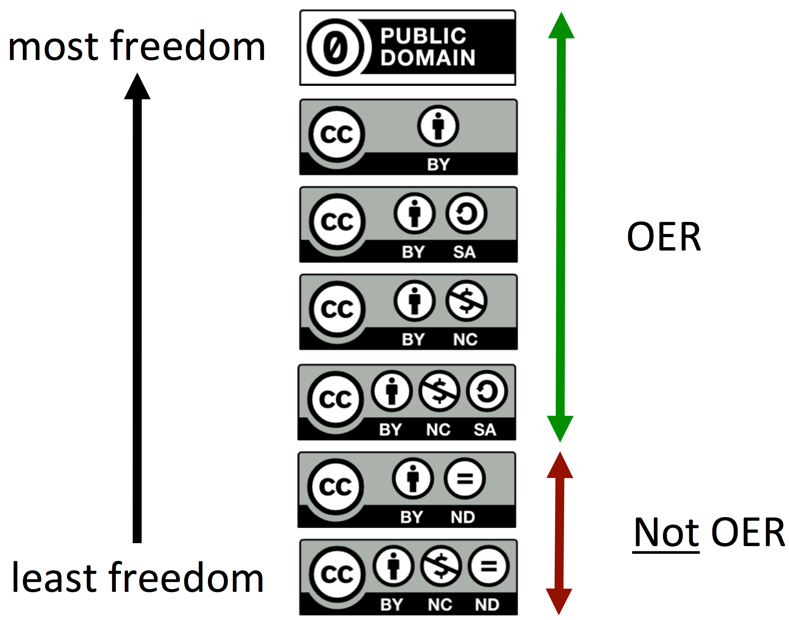
Open Educational Resources (OER) are teaching, learning and research materials in any medium – digital or otherwise – that reside in the public domain or have been released under an open license that permits no-cost access, use, adaptation and redistribution by others with no or limited restrictions.
"An Introduction to Open Educational Resources" by Abbey Elder is licensed under CC BY 4.0
While it is true that OER is considered "free" or no cost to students, there is a difference between what is freely available online or through the library and OER. OERs are licensed, usually under Creative Commons, and these licenses explain the blanket permissions that the creators of the OER are allowing under copyright law (Some Rights Reserved). These blanket permissions allow for the 5R activities while much of the free information you find online or through the library is "All Rights Reserved," under copyright law.
The chart below provides information on how OER is licensed, which will make it easier for you to identify works that can participate in the 5R activities.
Hint: It may be easier to remember that any license that contains the equal (=) symbol is not an OER license because it does not allow for derivatives of the original work, (meaning that it cannot be remixed or revised- important 5R activities).

This work by JR Dingwall is licensed under CC BY 4.0